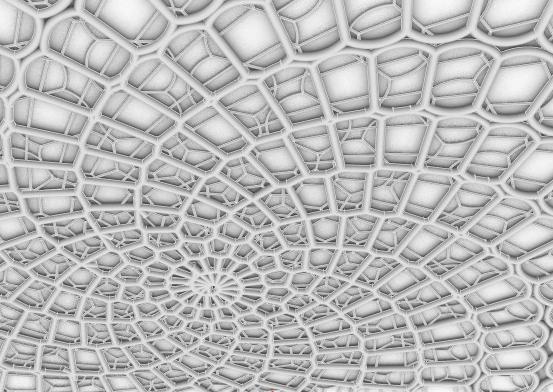
[LABORATORY BUIDLING]
Siemens Healthineers DCF, Forchheim
The work problematizes design development and execution of the laboratory space and technical space required for the project. The main goal is Digitizing projects using Building Information Modeling techniques to achieve highly efficient user oriented solutions.
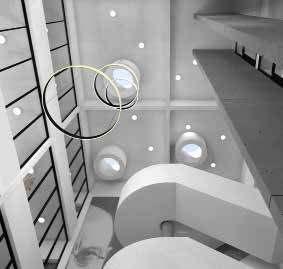
Laboratory Building
Foyer Overview
Renders show
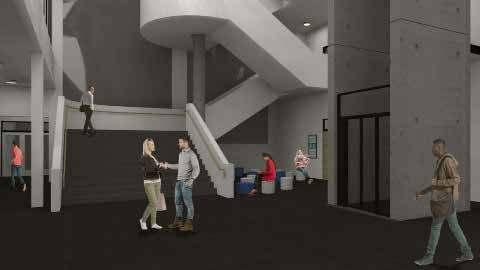
the 3 major parts of the building complex. The Technical Space, Laboratory Space and Foyer/Meeting Space. The new building complex follows the visual language of contemporary aesthetic techniques along with reviving the exisitng and providing a relatable outcome to the whole complex.
Residential Building
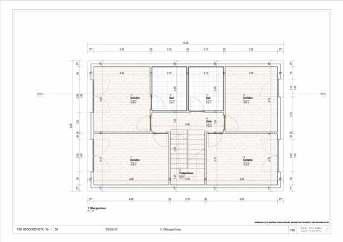
3D View
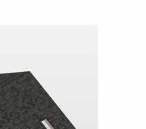
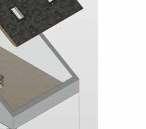
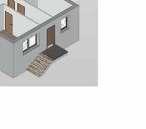
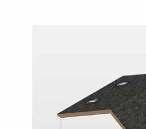
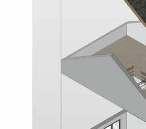
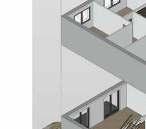
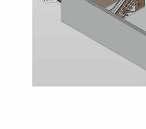
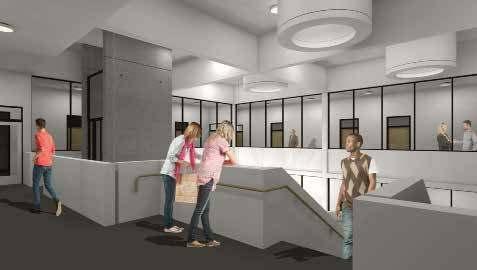
Renders show a small residential Set up in the surroundings of Frankfurt. The idea was to provide a concept design for the residence.
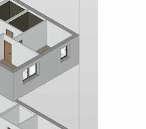
[GEMEINDEHAUS WEISSENBRUNN]
Revival and Extension of Socio Cultural Lankdmark
Gemeindehaus Weissenbrunn is a 200 year old important landmark. The main goal of the project is to revive the existing Lernershaus which serves as an important cultural point for the region.
Alongwithittheideaistoprovideanew
Gemeindehaus, a part of the church of Weissenbrunn. Both the objects have been designed based on the surroundingcontextandvisuallanguage of the neighbouring objects. Bridging the historic with the contemporary is an important and intriguing challenge set up for the project and its execution.
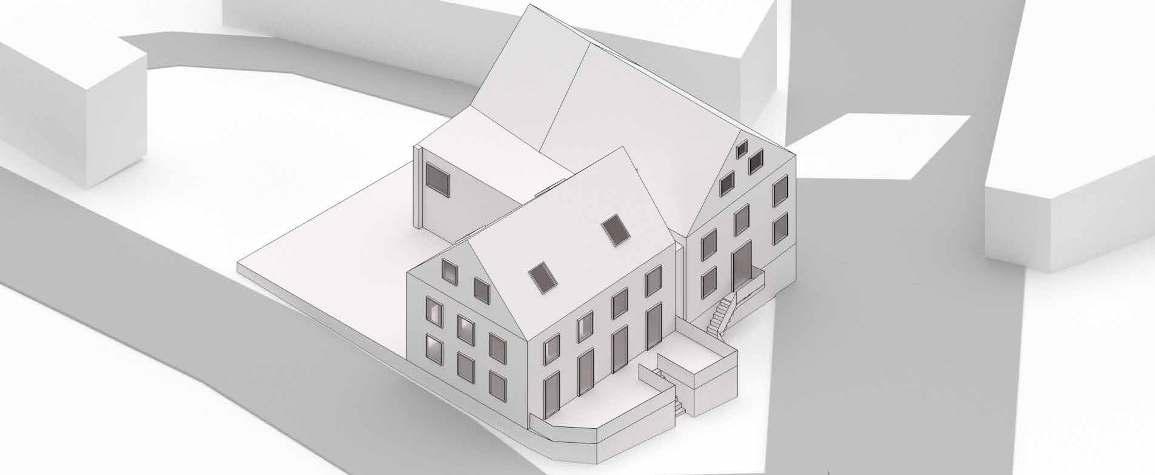
Weissenbrunn
Schematic Overview
Diagram illustrates the 3 major parts of the building complex. The Lernershaus, Gemeindehaus and the Treppenhaus. The new building complex follows the visual language of the old bulding complex which results in amalgamation of historic and contemporary aesthetic techniques along with reviving the exisitng and providing a relatable outcome to the whole complex.
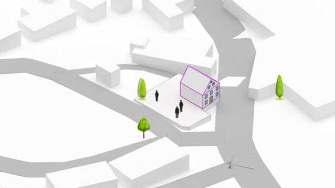
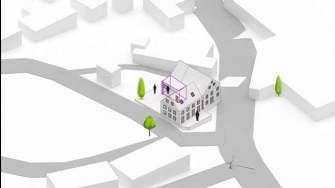
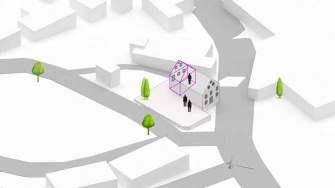
Site Layout
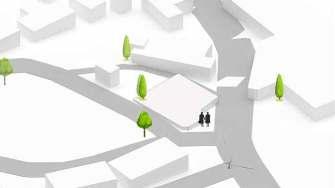
Social infrastructure
Culturall landmark
Existing Site: Lernerhaus
Social space
Revitalization: Lernerhaus
Social space
Common space /lobby
Extention: Gemeindehaus
Conference hall
Connectivity: Treppenhaus
Connecting Block
Barrier free environemnt
Construction Details
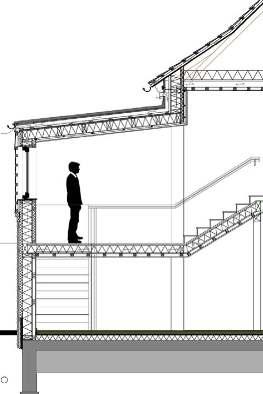
Gemeindehaus:
Lernershaus:
Renovation Details
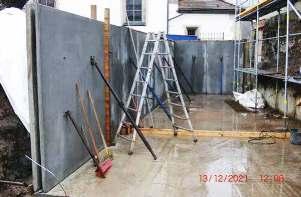
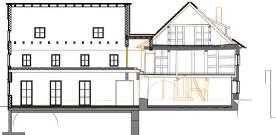
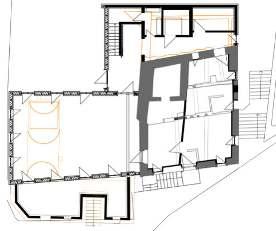
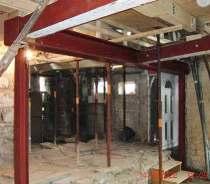
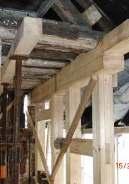
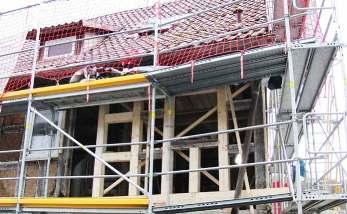
Lernershaus:
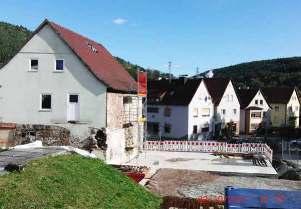 Interior renovation details: renovation of existing framework.
Renovation Details of Fachwork.
Roof Detail for treppenhaus/Lernershaus
Renovation and Extention
Site Execution of the Gemeindehaus along the existing Lernershaus.
Sectional view Lernershaus and Gemeindehaus
Floor plan showcasing existing Lernershaus, Gemeindehaus and extention.
Site Execution of the Gemeindehaus along the existing Lernershaus.
New Construction
Renovation and Extention
Interior renovation details: renovation of existing framework.
Renovation Details of Fachwork.
Roof Detail for treppenhaus/Lernershaus
Renovation and Extention
Site Execution of the Gemeindehaus along the existing Lernershaus.
Sectional view Lernershaus and Gemeindehaus
Floor plan showcasing existing Lernershaus, Gemeindehaus and extention.
Site Execution of the Gemeindehaus along the existing Lernershaus.
New Construction
Renovation and Extention
Roof Construction Details
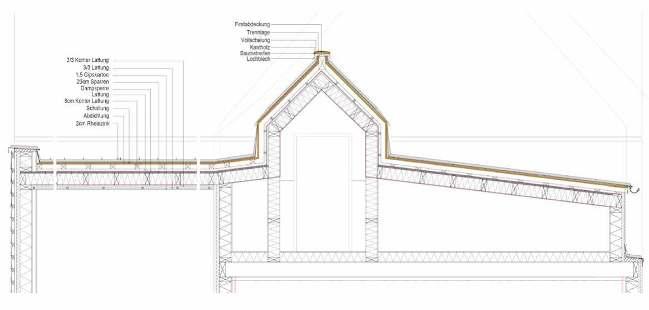
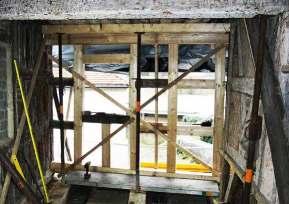

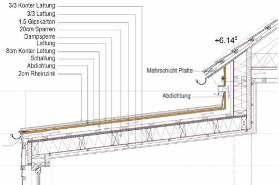
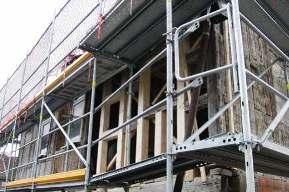
Longitudinal Section through the lernershaus, gemeindehaus and treppenhaus
Roof detail through the 3 major volumes is an important technical representation of juxtaposition of roof details of each block. Each block has been provided with separate roofs merging into single outcome. Each roof has been detailed with different varieties of materials based on the site requirement. The lernershaus and gemeindehaus follow the traditinal shingle detail belonging to the Franken region whereas the connecting spaces have been designed and detailed using Zinc metal in contruction techniques.
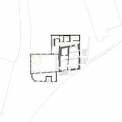 Roof detail through the treppe and old building roof from lernershaus. Fachwork reconstruction in Lernershaus.
Roof detail through the treppe and old building roof from lernershaus. Fachwork reconstruction in Lernershaus.
[FLOSSENBURGER STRASSE]
Renovation of Residential Project in Bayern.
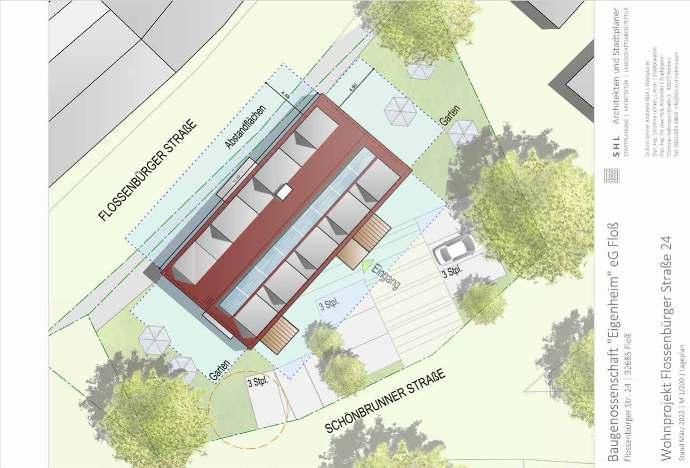
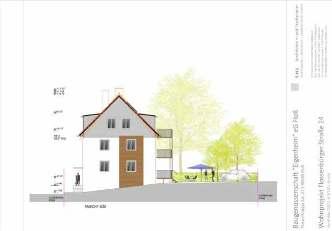
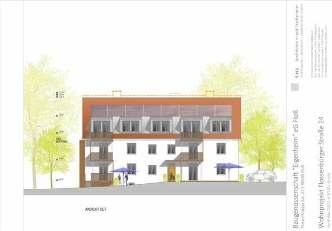
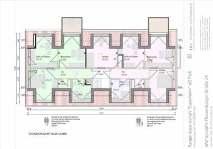
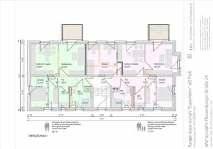
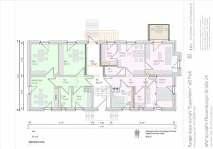
The project belongs to social housing project in the region. Therefore the prior requirement is to provide barrier free as well as contemporary outlook to the existing piece of work. Thus resulting conceptual proposal is graphical representation as a speculation or “story telling” in order to come up with new outcomesovercomingthechallengesof the pre existing traditional building.
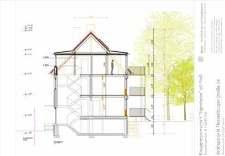 Drawings show the existing layout with details shocasing extention and demolition in order toachieve the required layout and language complimenting the genre belonging to the contemporary style.
Section
Elevation
Elevation
Drawings show the existing layout with details shocasing extention and demolition in order toachieve the required layout and language complimenting the genre belonging to the contemporary style.
Section
Elevation
Elevation
[CONSTRUE]






Private residence, Panchkula, India.
A residence for modern day nuclear family was the focal point for the design proposal for the project involving designingandexecutionofeveryminute detail from wall to wardrobe. The design proposal, execution and construction includes formulation of spaces based on requirements of the client and taking zoning as per bylaws and site orientation into consideration.
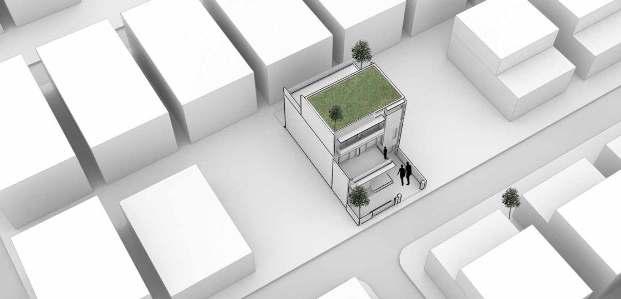
Design Conceptualization




Design conceptualization stages developed based on plot size, orientation and city bylaws. The site layout has been designed based on zoning bylaws and frame style of the house in which frame is mandatory in the front and rear elevation, also keeping in mind the permissible area limits for each floor.
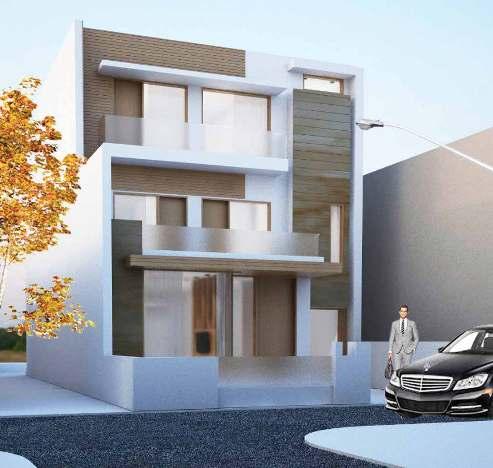
Design Development
Isometric views showing internal layout and cross section
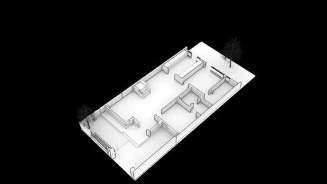
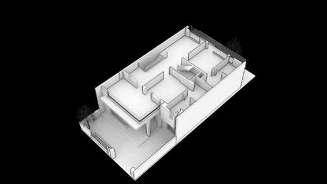
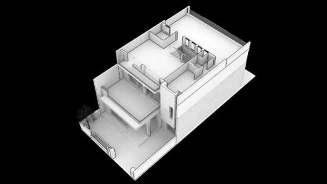
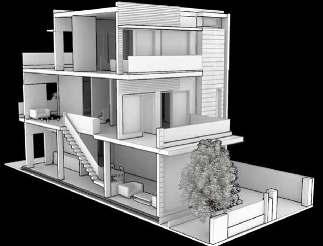
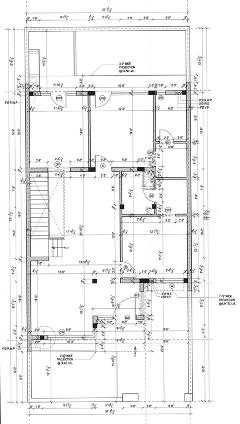
Execution and Construction
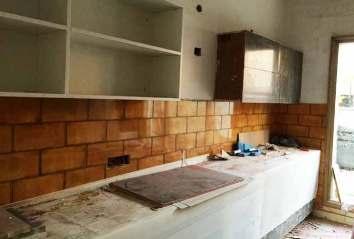
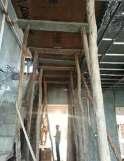
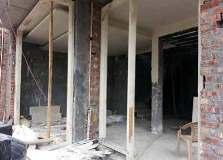
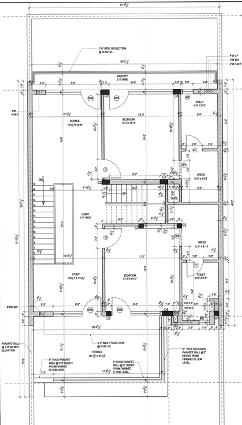
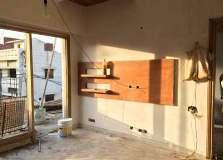
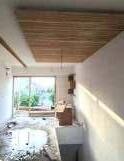
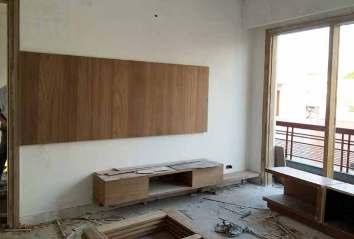
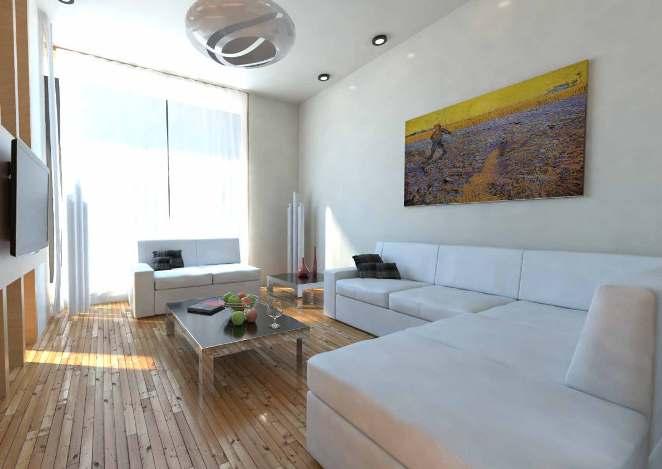
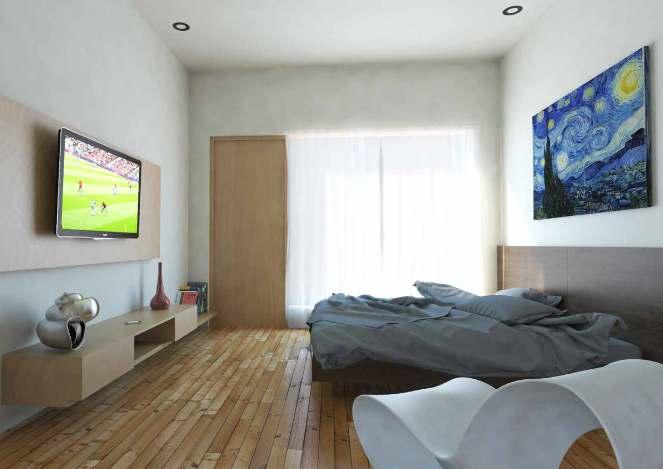
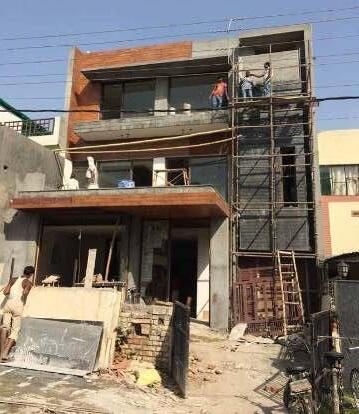
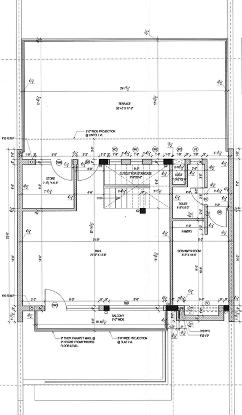
[CO-CONSTRUCT]

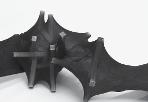
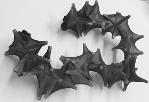
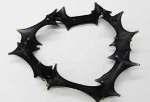
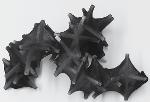
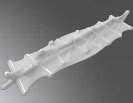
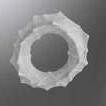
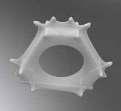
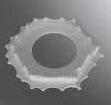
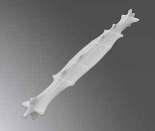

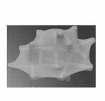
Co-Construct is a public urban game designed to speculate on participatory approach towards design and space making.
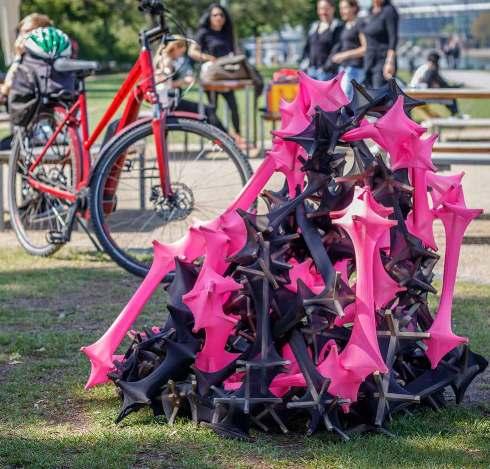
Co-Construct explores the visual languageofaconsciousbody.Cognizant is conceptualized as an urban toy, a distributed social game and collective ‘making’ experience that seeks to engage people in order to construct open-ended design formations. The participatory design process aims to bringphenomenaofsocialnetworksand gameculturetothephysicalenvironment
at urban scale. The collective act of coming to one place building together becomes a shared memory for people attending. The energy for Cognizant is sourcedfrompeople’sinteractions.None ofthepiecescandoanythingonitsown, and only when they are put together do the game “Co-Construct” emerges.
link to the video: https://vimeo.com/349143037
https://vimeo.com/354972408
https://vimeo.com/354971209
Physical prototypes designed based on skeleton aggregation logic with respect to the skin. Stitching and different aggregation techniques result in different folding behavior onto each prototype. An extensive application logic has been derived on the aggregation of spicules and resulting outcome behavior to analyze the differences between the outcomes. Digital simulations of the prototypes with different spicule arrangement and typology analyzing the textile engineer with respect to the loosely arranged wooden aggregates. Prototyping as a way of Conceptualization Agent Based Design Distributed Public Game, Master Thesis Project in Advanced Architectural Design at SAC.Module Typology and Behavior
hybrid
Pattern Derivation
















Images show various module typology resulting from constraint aggregation arrangement over the textile membrane in variety of ways. Folding of the modules controlled by the spicule logic results in flexible to rigid linear strands, to rigid geometrical entities to highly rigid assembling modules. Inherent consciousness of the skin accomplished through tensioning and interlocking comes into play to create different assembling behaviour. A consistent dialogue between two species results in a conscious system.
Diagrams illustrate the outcome of the various types of modules based on variation in the aggregation and tensioning constraints i.e. the length of textile strands and skeleton type. Each of the module behaviour results in various outcomes from flexible to rigid. Differences in each of the module type depend on the symbiotic relationship generated between constraints when they are put together. Some of the Patterns derived are similar in their outcome but with varying degree of folding.
homogeneous spicule arrangement [type 01] skeleton type 2 homogeneous spicule arrangement [type 03] skeleton type 2 & 4 homogeneous spicule arrangement [type 05] skeleon type 6 homogeneous spicule arrangement [type 06] skeleton type 6 homogeneous spicule arrangement [type 04] skeleton type 4 & 6 homogeneous spicule arrangement [type 02] skeleton type 2 with stitch homogeneous spicule arrangement [type 07] skeleton type 1 with stitch spicule arrangement [type 8] skeleton type 1 & 2 [Bifurcation] [Open Ended] [Close Ended] [Curvilinear] [Linear] [Stitched Body] [Rigid Body] [Arches]Rule Set for Game Development as Co-Construct





Variety of spicules explored as constraints to derive a logic set for the participants and create their own prototype.

Co-Construct and Human Agent
Various sequence evolved from varying arrangement of set of spicules.



Put them together in your own way and derive new patterns and ways of exploring Co-Construct
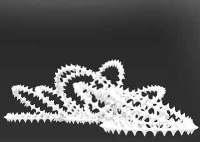
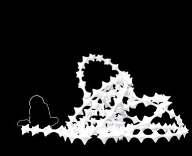
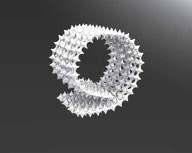
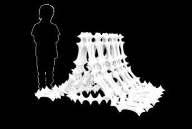
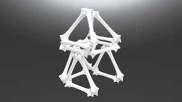
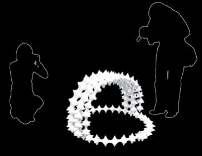



The above rule set explains the way the game has been developed to achieve the notion of participatory design. A three step ruleset derived to communicate and help engage the participants along with giving them opportunity to engage, evolve new sequences or use the defined ones to play and achieve open ended design formations. Thus, crowd sourcing is accomplished through this defined ruleset as a way for people to approach “cognizant”.
Co-construct seeks to engage people at collective level where collective comes into action when people interact with “cognizant” and evolve and co-evolve new ways of designing space and themselves. A way of approaching architecture through Architecture Intelligence and communication with our environment and each other enabling us to think how we can interact and involve with our surroundings in future.
Diagrams above show co-construct with human agent where open ended design formations are achieved by applying the ruleset. The participatory design approach brings phenomena of crowd sourcing as a way of space making through introduction of game culture in the discourse.
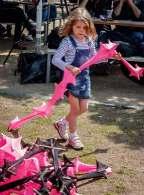
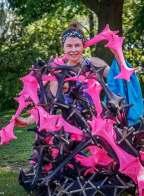
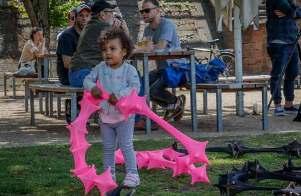
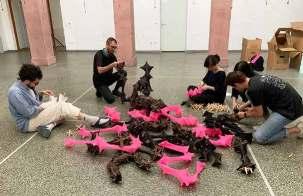
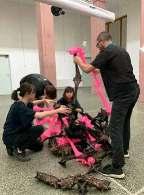
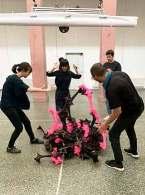
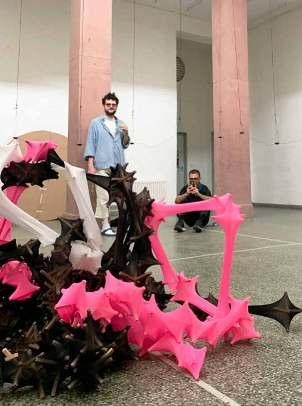
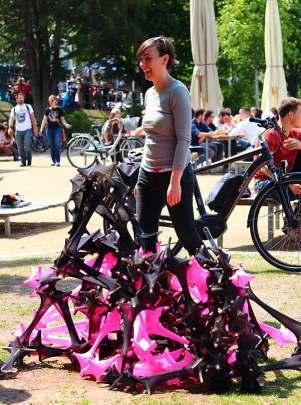 “Co-Construct” being organized at Staedelschule Licht Halle with an aim to organize a workshop and help participants engage in a more democratic way by designing cognizant in their own ways and thus, following the ruleset to create design formations.
Real-time documentation of “Co-Construct” as a game being organized at Frankfurt Maincafe with a given instruction set for the participants to involve. The game involved people from various age groups playing in their own ways.
“Co-Construct” being organized at Staedelschule Licht Halle with an aim to organize a workshop and help participants engage in a more democratic way by designing cognizant in their own ways and thus, following the ruleset to create design formations.
Real-time documentation of “Co-Construct” as a game being organized at Frankfurt Maincafe with a given instruction set for the participants to involve. The game involved people from various age groups playing in their own ways.
[REPRESENTATIONAL OBJECTS]
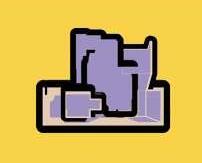
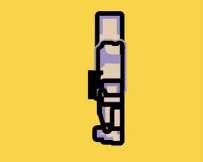
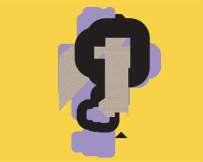
Workshop on Representational Objects by Peter Testa and Devyn Weiser at SAC. (Team work)
The workshop seeks to engage in the notion of representation as a system of exchangethattakesplacewithinobjects.
To generate a new language from both overminingandunderminingtheobjects. Inordertocreateanewspatialtype,the participants had to treat architectural objects as “unknown” whose properties are distributed as ways of seeing and representing. A new way of perceiving these objects leads the pathway for a new architectural paradigm.
Design Conceptualization
Images show distortion of 3 main elements of one of the 3 dimensional views of building complex with typical standard viewports. With an aim to distort and explore new ways of seeing and transforming the already existing notion of objects including 2D &3D outline and 3D outline with new compositions thus, setting up basis for a new architectural paradigm in the future. Detailed outcomes visualized as plans and sections resulting from fragmentation of original building blocks as objects. New drawings dissolving the original identity of the objects to give rise to a new catalogue which could be further “read” and interpreted to achieve new design and theoretical paradigm.
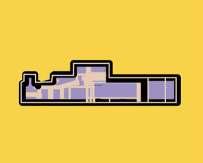
Plans, Sectional and 3D views showing outcome resulted by the re-consideration of the architectural, morphological, typological and syntactical elements which make up a new ensemble. Thus, leading to derivation and perception of the distorted “readymade” materials in a way introducing new ways of treating, representing and defining the architectural objects. As the focus of the above images has been to deliver abstract sketches, drawings interpreted in new ways, the final result of the analysis of the detailed sketches was rediscovering the notion of lines in Architecture as a way through drawings. Working on lines as objects converting them into architectural objects in 2-dimensional space with effects of those of plans, sections and 3 dimensional views.
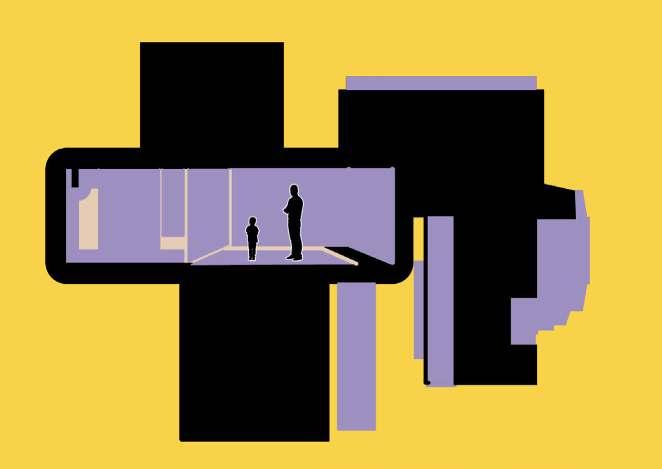
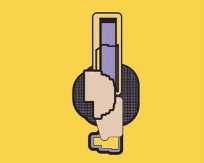
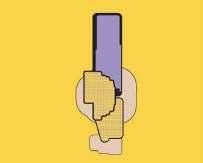
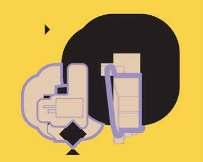
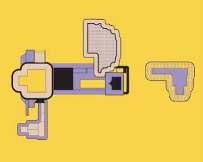 Reconfiguring the “Notion of Lines in Architecture”
Reconfiguring the “Notion of Lines in Architecture”
[VISUAL STUDIES]
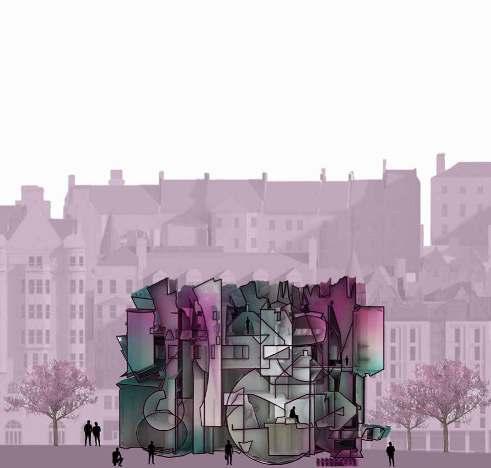
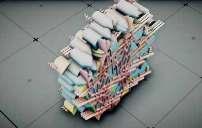
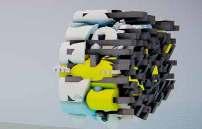
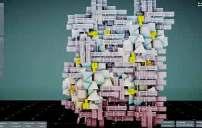
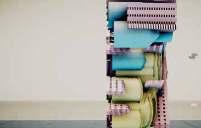
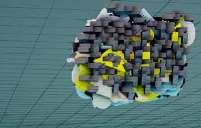
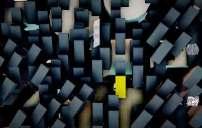
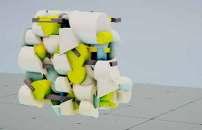

Deep Texture and Strong Silhouette, first semester work at SAC.
The work problematizes about contemporary image culture through critical study and analysis of images. This involves Visual studies including rationalizing formal properties of objects and images which further help in evolution of one’s interest in a specific field of study. With the aim to study about different experimental workflows and generating a relation between these workflows, the project has been evolved not as a solution but an intensive study towards a new image culture.
With the intent to understand object oriented ontology the result has been achieved by amalgamation of two different workflows i.e. visually analyze chosen painting by Marx Ernst and produce literal or implied space of the painting to 3 dimensional speculative graphic space and visual study of image data generated using special composition techniques respectively which direct towards making a case termed “Deep texture and strong silhouette.”
Formal Qualities
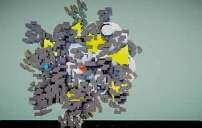 The catalogue above show set of selected images which have 2 specific characteristics i.e. texture and silhouette resulting by amalgamation, repetition and arrangement of defined set of objects. These characteristics are further developed using a strategy towards designing a “heterogeneous object”. The object is thus explained through the argument made as “Deep texture and Strong silhouette”.
Set of images with an aim to design and define “texture” as a formal quality using various 2 dimensional and 3 dimensional ways of arrangement of the pre-defined set of objects.
Set of images with an aim to design and define objects with a highly defined “silhouette” as a formal quality using various 2 dimensional and 3 dimensional ways of arrangement of the pre-defined set of objects.
The catalogue above show set of selected images which have 2 specific characteristics i.e. texture and silhouette resulting by amalgamation, repetition and arrangement of defined set of objects. These characteristics are further developed using a strategy towards designing a “heterogeneous object”. The object is thus explained through the argument made as “Deep texture and Strong silhouette”.
Set of images with an aim to design and define “texture” as a formal quality using various 2 dimensional and 3 dimensional ways of arrangement of the pre-defined set of objects.
Set of images with an aim to design and define objects with a highly defined “silhouette” as a formal quality using various 2 dimensional and 3 dimensional ways of arrangement of the pre-defined set of objects.
Axonometric View showing detailed overview of the interior core of dense set of intersecting set of pre-defined objects along with a heterogeneous facade on all sides. The object is a new way of achieving and perceiving a 3-dimensional object in digital space. The outcome object is a way to speculate towards designing a new contemporary and futuristic space through the use of readymade objects in a world already full of pre-existing information i.e. readymade architectural objects.
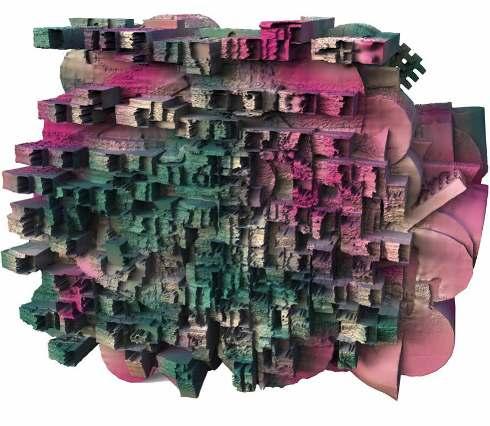
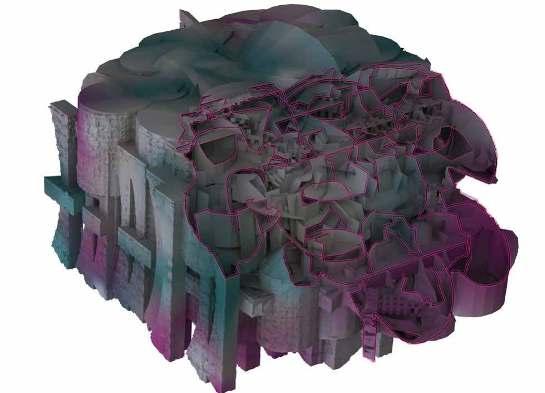
Site and Surroundings
Site for New Multi Speciality Block
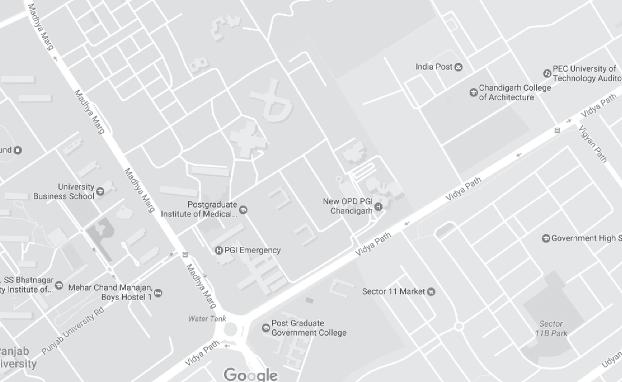
[PERFORMATIVE INTELLIGENCE]
Hospital Design, Chandigarh, India.
The project is an extension to the existing hospitalcomplexofPGIMER,Chandigarh.
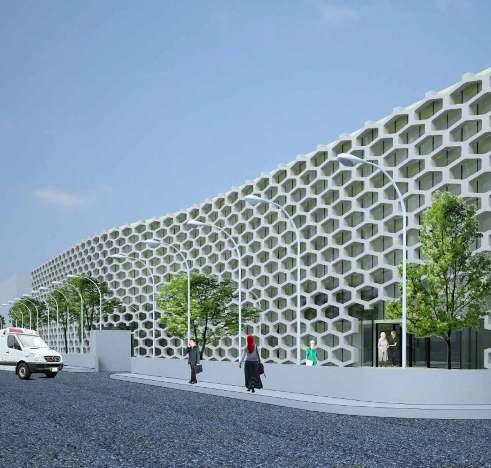
The project aims to design and execute a 200 bedded multi speciality hospital in the block. A highly specialized and well designed space based on the climatic conditions of the region is the aim of the project.
City Road Network V3
Sectoral Road Network V2
Main Entrance 01
Existing Block PGIMER
Entrance 02
Map of the existing campus of PGIMER, Chandigarh and its connection to the other sectors along madhya marg. The new site is an extension to the existing nehru hospital adjacent to the site.Design Conceptualization




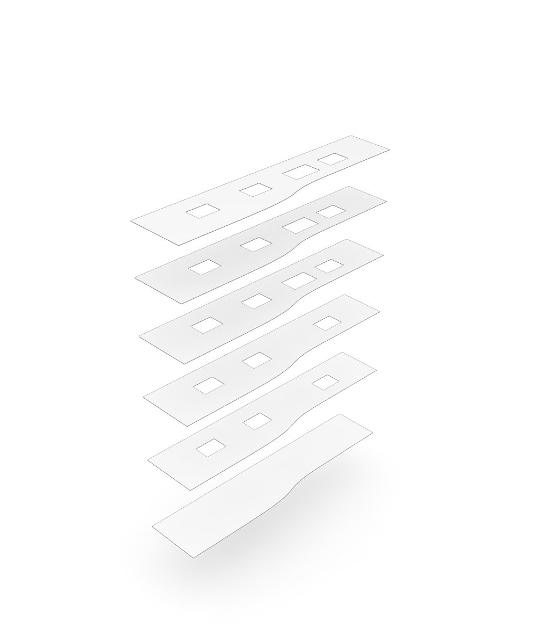
Diagrams showing conceptual stages from site layout including access and orientation to courtyard planning within the building block catering to the climatic conditions of the region. These courtyard spaces include spaces for recovery and recreation of the users.
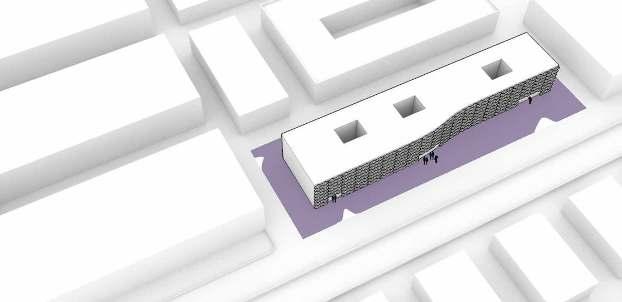
Design Development












Schematic diagram showing allocation of OPD and IPD departments and their services in the hospital.
Fourth Floor Plan
Inpatient Department
Third Floor Plan
Inpatient Department
Second Floor Plan
Inpatient Department
First Floor Plan
Outpatient Department (Maternity/Obstetrics)
O.T. Complex
Ground Floor Plan
Outpatient Department
Emergency and Diagnostics
Lower Ground Floor Plan
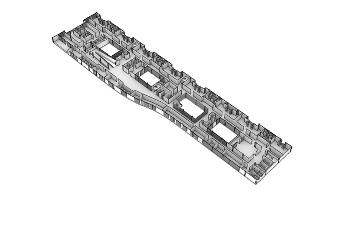
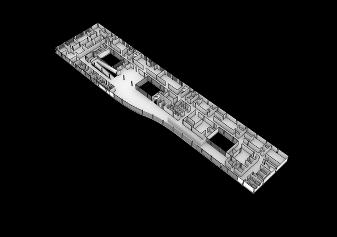
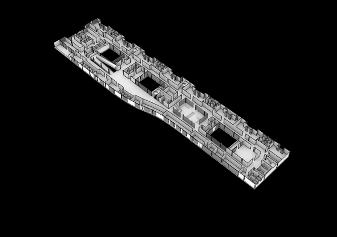
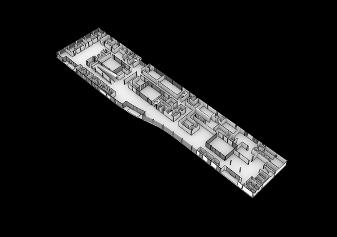
Services
Service Entry
Isometric section through the building showing vertical arrangement across the block

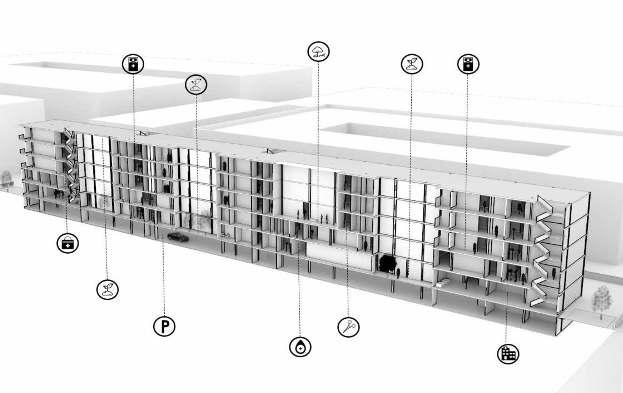

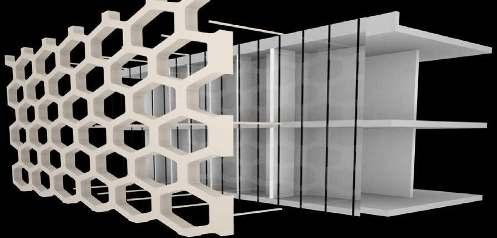
Design is based on the performance of all the functional regions therefore location of each region has been of main consideration in the design process. Provision of three courtyards within the longitundinal block provide with natural light and ventilation across the block.
Facade Development
 Details of facade based on hexagonal grid pattern. Each hexagonal unit is considered hollow with perforations to act as skin for the internal layer of the exterior of the block providing both ventilation and shelter from direct south sun on the facade.
Details of facade based on hexagonal grid pattern. Each hexagonal unit is considered hollow with perforations to act as skin for the internal layer of the exterior of the block providing both ventilation and shelter from direct south sun on the facade.
[HYPERTHREADS]
The aim of the workshop is Intuitive designing from sheet to form which is subjected to geometry and material. Objectives include understanding the impact of various types of folds and curves on paper acting as a structure in itself. Thus analysing the structural stability. Further exploration of physical prototypes into digital explorations further testing their strength.
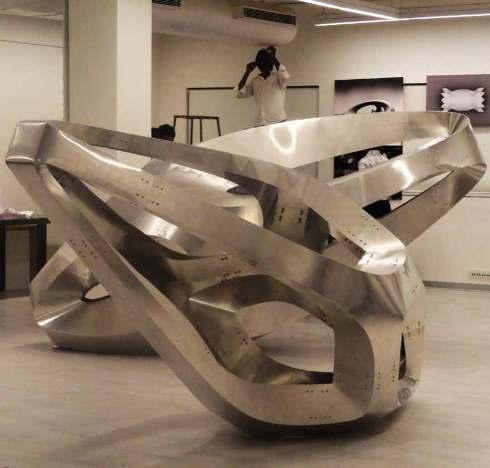
Geometrical Analysis
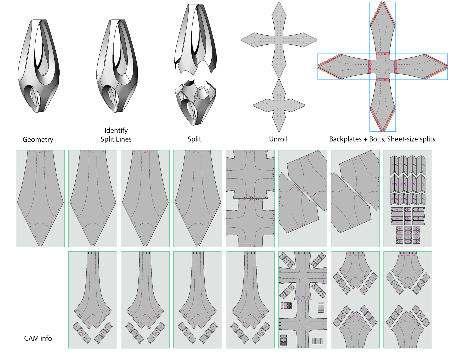 Geometrical analysis and fabrication techniques include computer aided manufacturing to install the predesigned module.
Geometrical analysis and fabrication techniques include computer aided manufacturing to install the predesigned module.







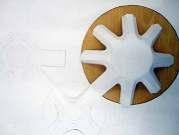
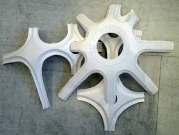
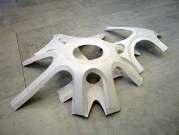
[FORM AND FABRICATION]
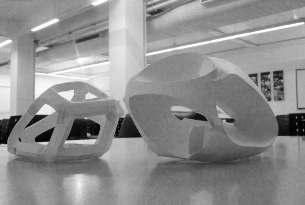
This includes set of selected work showcasing different ways of experimenting and fabrication using variety of materials from metal to paper, latex, silicon, wood and textile.
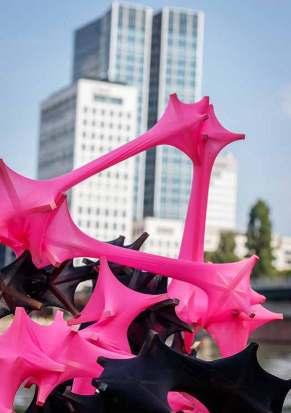
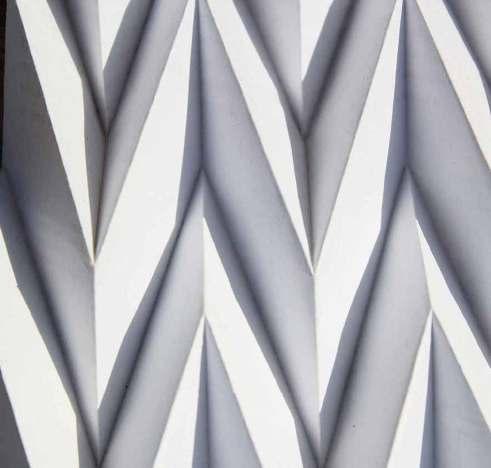
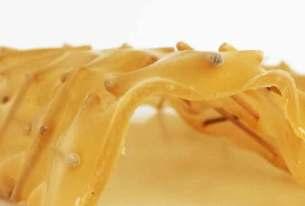
Digital Explorations
Radial
Digital
radial









being applied onto spherical geometry to obtain different results. The outward force leading to deformations in the geomtery thus resulting in different outcomes.
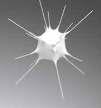
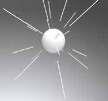



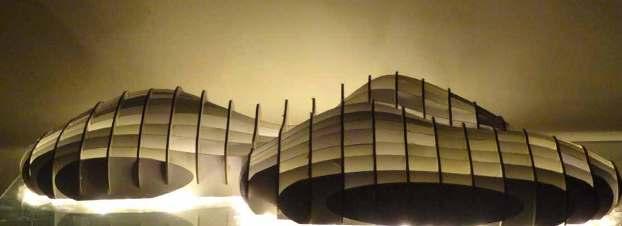 taxonomy
Digital and Physical Prototype for a Pavilion. Rib structure technique using grasshopper was used to create the physical prototype.
Grasshopper script generated to apply Radial Taxonomy on spherical object.
explorations showing
taxonomy
taxonomy
Digital and Physical Prototype for a Pavilion. Rib structure technique using grasshopper was used to create the physical prototype.
Grasshopper script generated to apply Radial Taxonomy on spherical object.
explorations showing
taxonomy
